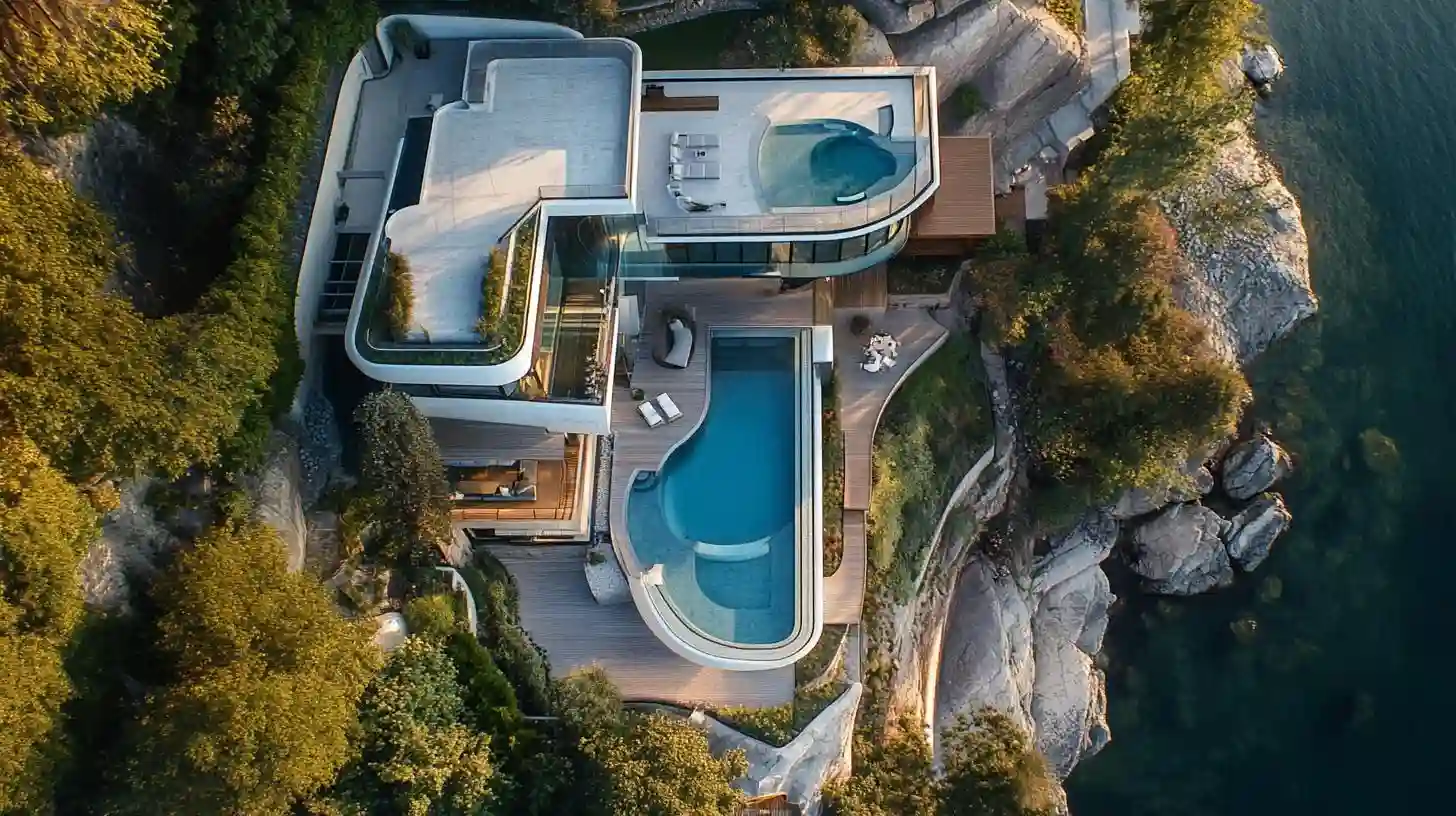
Infospherezone

The landscape of modern residential design is undergoing a profound transformation, defined not just by the demand for functional spaces but also by a growing appreciation for aesthetics and the integration of innovative architecture. Eye-catching houses are emerging as symbols of creativity and individuality, embodying a shift towards homes that tell a story, reflect the personality of their occupants, and foster a connection with the environment.
One of the most significant trends in contemporary residential architecture is the move toward sustainability. Many homeowners are seeking to minimize their ecological footprint while maximizing style and comfort. This has led to the creation of houses that not only capture attention through their striking designs but also utilize eco-friendly materials and technologies. Green roofs, solar panels, and rainwater harvesting systems have become common features in modern homes, enabling a harmonious coexistence with nature. The blending of these sustainable elements with bold architectural statements has resulted in dwellings that are both beautiful and responsible, showcasing a commitment to preserving our planet for future generations.
Furthermore, the emphasis on open spaces and fluidity in design has given rise to homes that offer both elegance and functionality. The traditional notion of segmented rooms is being replaced by open floor plans, allowing for seamless transitions between living, dining, and kitchen areas. This trend not only enhances the visual appeal of a home but also promotes a sense of community among family members. Large windows and sliding glass doors are being incorporated to invite natural light and create a connection to the outdoors, making the interiors feel more expansive and airy. This blurring of boundaries between inside and outside spaces creates an atmosphere of tranquility and invites nature into everyday life, demonstrating that functional design can indeed be strikingly beautiful.
The architectural style of residential homes is becoming increasingly diverse as more homeowners seek to express their personal tastes. From minimalistic designs with clean lines and a monochromatic palette to vibrant, eclectic homes that embrace color and texture, the modern architectural landscape is a tapestry of styles. The integration of unconventional materials, such as shipping containers, reclaimed wood, and even glass, is making waves in the industry and encouraging architects to push the limits of creativity. Additionally, playful shapes and asymmetrical designs are emerging, challenging traditional notions of aesthetics and redefining what a house can look like. This diversity not only enhances the character of individual neighborhoods but also inspires others to dream big about their future homes.
The rise of technology is another driving force behind the transformation of residential design. Smart home features are becoming standard in many newly constructed houses, allowing homeowners to control various aspects of their living environments with the touch of a button. From adjusting temperature and lighting to enhancing security, this integration of technology has become an essential element of modern living. Notably, these smart features can be incorporated into the architectural design itself, creating a seamless bond between technology and aesthetics. For instance, recessed lighting can accentuate architectural features while ensuring energy efficiency. Similarly, hidden wiring and smart thermostats can maintain the clean lines that are so prized in contemporary design, allowing the beauty of the structure to shine through.
Public perception of what constitutes an ideal home is evolving, heavily influenced by the growing focus on mental and physical well-being. The notion of creating spaces that not only serve as residences but also promote health and happiness is gaining traction. This has led to the inclusion of elements such as biophilic design, which emphasizes the connection between human beings and nature. Homes that incorporate indoor gardens, natural ventilation, and ample daylight have proven to enhance well-being, leading to happier, more productive inhabitants. The architectural community is responding enthusiastically, crafting homes that heal rather than just shelter, blurring the lines between style, function, and health.
As these architectural marvels continue to emerge, they are not merely reshaping individual lives but are also having a profound impact on urban landscapes. Neighborhoods are increasingly being recognized as dynamic entities where living spaces are influenced by design philosophies that prioritize community and social interaction. Public spaces, parks, and communal facilities are integrated into residential designs, fostering a sense of belonging and shared purpose among residents. The transformation of modern residential design is, therefore, a reflection of broader societal values, underscoring the importance of connectivity in an increasingly fragmented world.
This spirited evolution in how we envision our homes reveals much about our aspirations. Eye-catching houses, serving as canvases of creativity and sustainability, are undoubtedly at the forefront of this architectural renaissance. They emerge not only as places to live but also as reflections of our values, hopes, and a collective desire to create spaces that resonate with beauty and harmony. Through innovation, we are witnessing the birth of a new era in residential design, one that celebrates individuality while championing environmental stewardship and technological advancement.